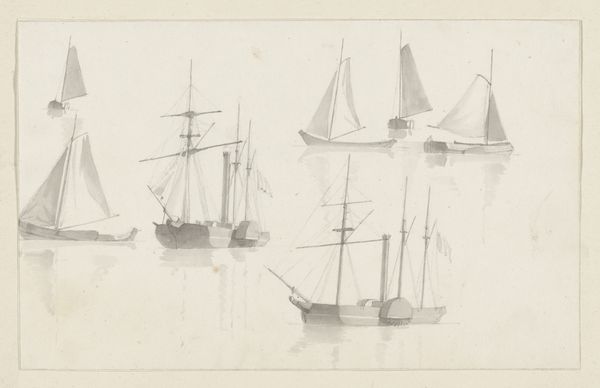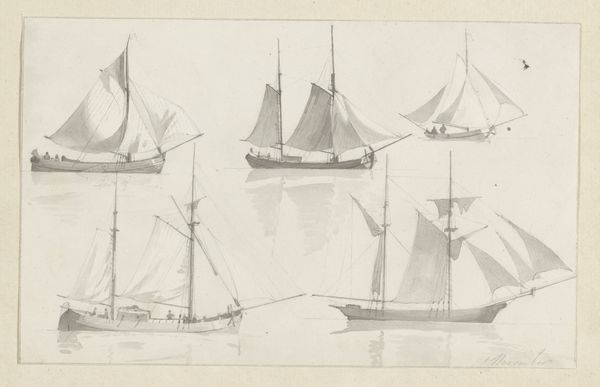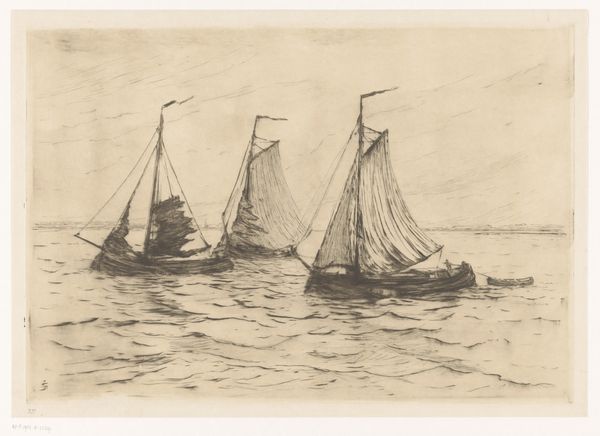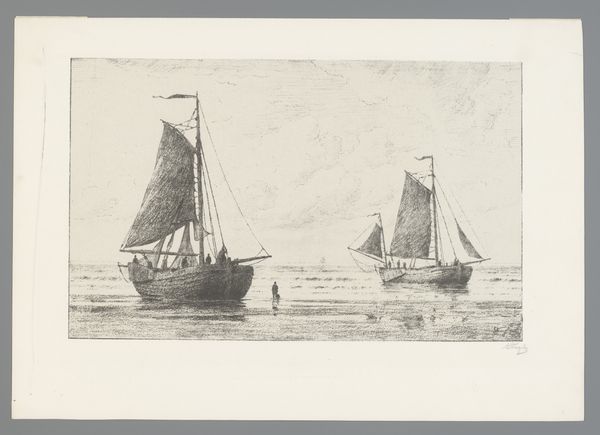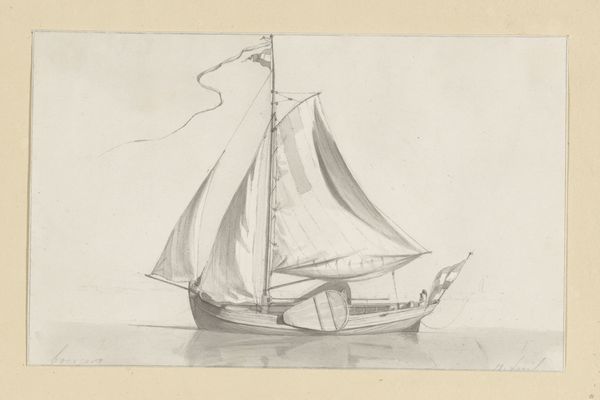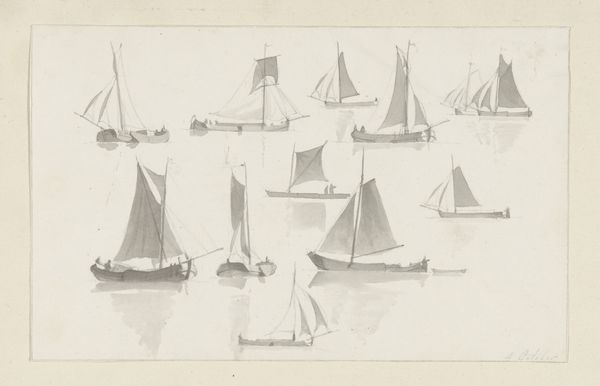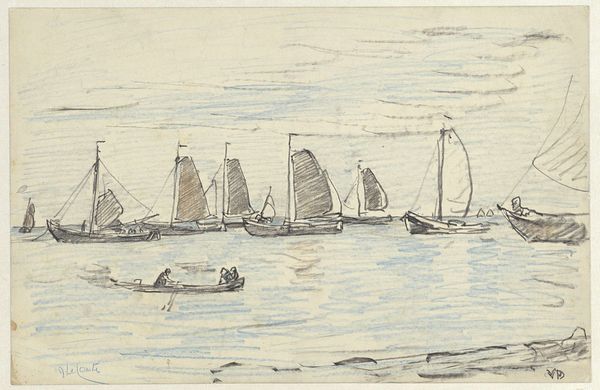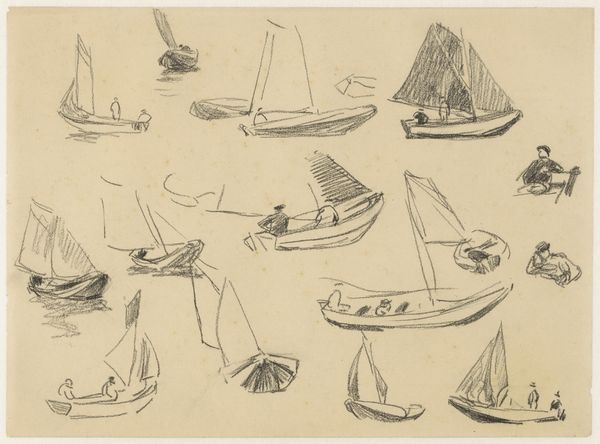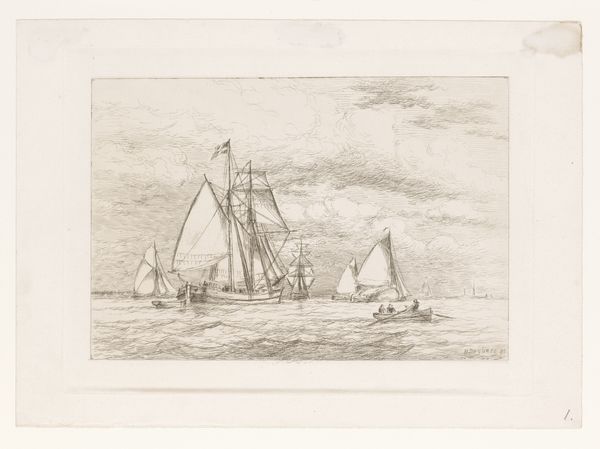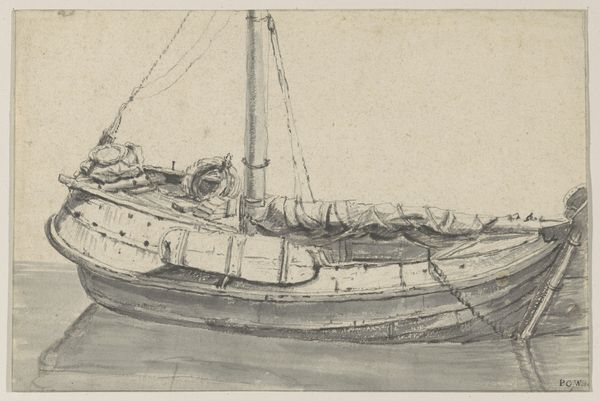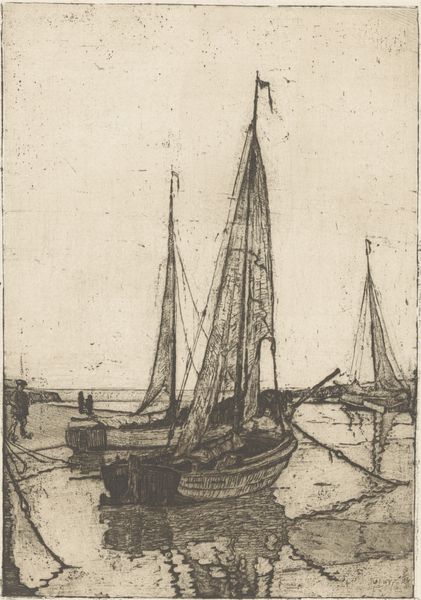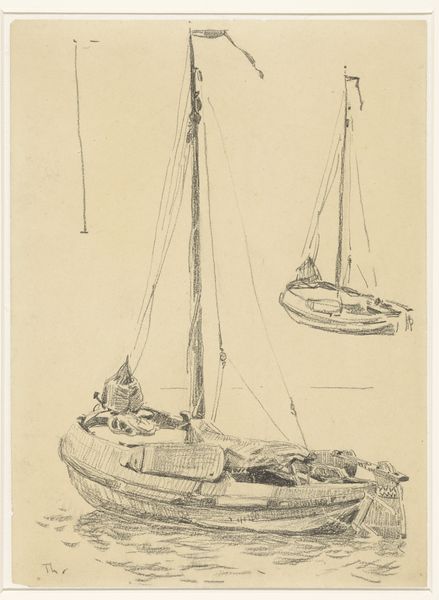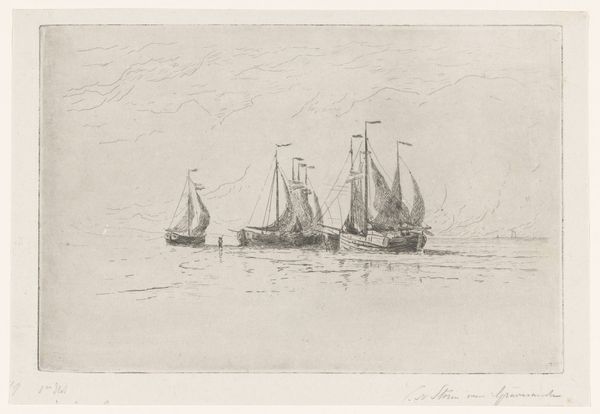
drawing, pencil
#
drawing
#
pencil sketch
#
landscape
#
sketch
#
pencil
#
sketchbook drawing
#
realism
Dimensions: height 225 mm, width 309 mm
Copyright: Rijks Museum: Open Domain
Curator: This is a pencil drawing called "Studieblad met drie boten," or "Study Sheet with Three Boats," by Willem Bastiaan Tholen, created sometime between 1870 and 1931. Editor: My first thought is that there’s a wonderful sense of lightness and immediacy here. The artist has captured the essence of these boats with incredible economy of line. Curator: Tholen was part of the Hague School, a group of Dutch realist painters. This drawing offers a glimpse into their artistic process and their fascination with everyday life and maritime scenes, a world inseparably bound with labour. We see figures inhabiting the vessels. This links to the historical dominance of sea transport and the boat as an important symbol for trade and transport within Dutch culture, while these fishing boats served a specific, economic function in local communities. Editor: The composition, although seemingly simple, has a beautiful rhythm. The masts of the boats create a dynamic vertical movement against the stillness of the water, while the soft gradations of light and shadow add depth to the scene. Look at the almost diagrammatic clarity of the rigging, like semiotic code mapping maritime networks. Curator: Absolutely, and beyond the aesthetic, we might also consider how such depictions contribute to shaping our understanding and perhaps even idealization of the fishing community—do they obscure its less appealing sides, such as poor working conditions for these fisherman and social injustice more broadly? Editor: An important point. Yet, within its own terms, one could also argue that the image conveys a sense of humble beauty and respect for the lives of these maritime workers. The rough sketches lend authenticity. Tholen does not romanticize the subject, showing them with candid detail instead. Curator: This makes me reconsider my assumptions – to grant Tholen perhaps an interest in capturing unvarnished existence as opposed to creating a purely idealized vista, which opens a dialogue concerning what kind of gaze we bring when observing similar scenes today. Editor: Exactly, and through that close observation we understand something more essential about structure and movement, how they work in nature but equally on the page. Curator: It shows us that every mark, every stroke contributes not only to visual appeal but to how stories of people are built within art. Editor: It has been enlightening, providing us with distinct routes for considering Tholen’s drawing of the boats and opening questions about what each approach highlights or possibly overshadows.
Comments
No comments
Be the first to comment and join the conversation on the ultimate creative platform.
